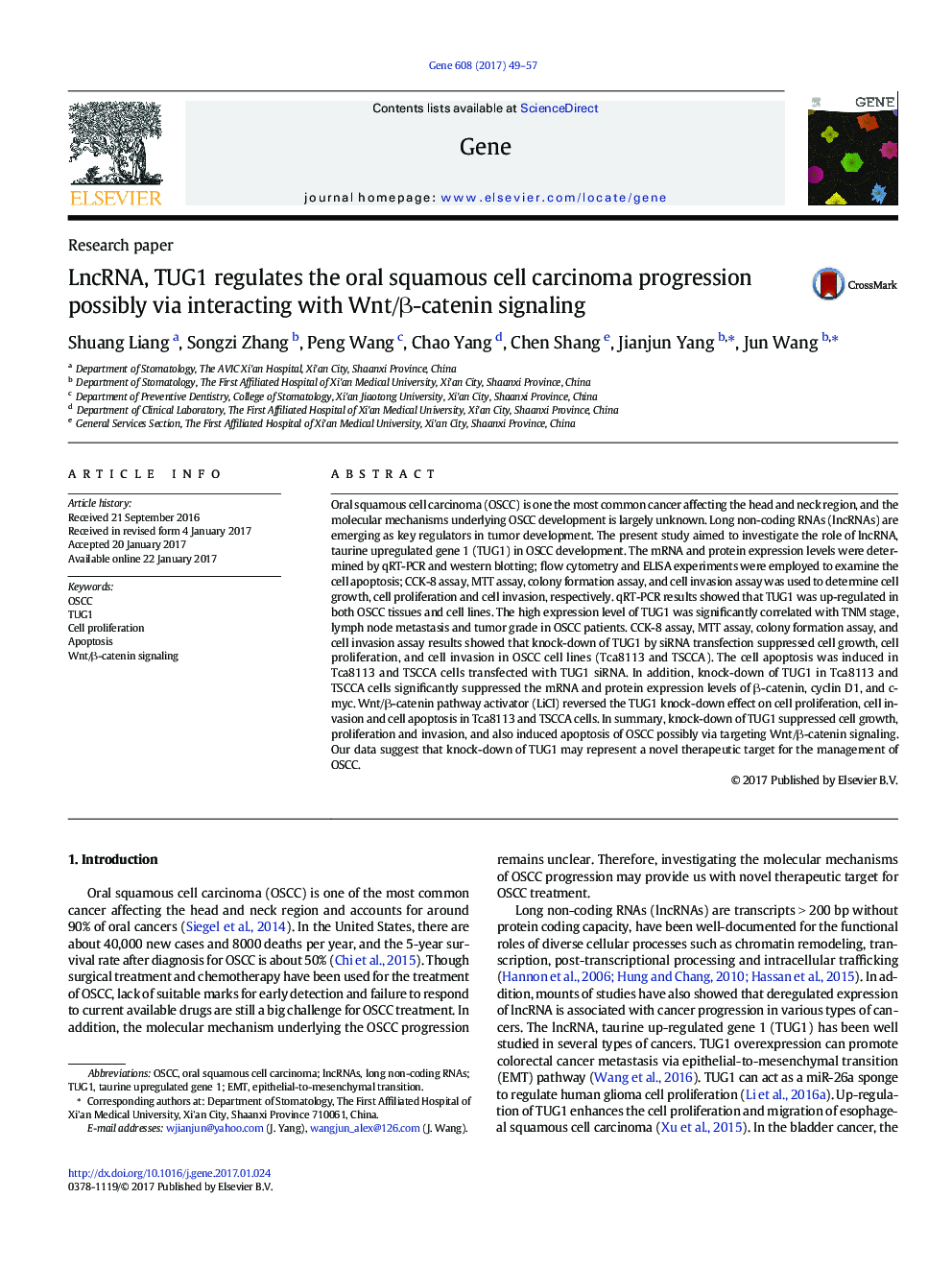| Article ID | Journal | Published Year | Pages | File Type |
|---|---|---|---|---|
| 5589353 | Gene | 2017 | 9 Pages |
Abstract
Oral squamous cell carcinoma (OSCC) is one the most common cancer affecting the head and neck region, and the molecular mechanisms underlying OSCC development is largely unknown. Long non-coding RNAs (lncRNAs) are emerging as key regulators in tumor development. The present study aimed to investigate the role of lncRNA, taurine upregulated gene 1 (TUG1) in OSCC development. The mRNA and protein expression levels were determined by qRT-PCR and western blotting; flow cytometry and ELISA experiments were employed to examine the cell apoptosis; CCK-8 assay, MTT assay, colony formation assay, and cell invasion assay was used to determine cell growth, cell proliferation and cell invasion, respectively. qRT-PCR results showed that TUG1 was up-regulated in both OSCC tissues and cell lines. The high expression level of TUG1 was significantly correlated with TNM stage, lymph node metastasis and tumor grade in OSCC patients. CCK-8 assay, MTT assay, colony formation assay, and cell invasion assay results showed that knock-down of TUG1 by siRNA transfection suppressed cell growth, cell proliferation, and cell invasion in OSCC cell lines (Tca8113 and TSCCA). The cell apoptosis was induced in Tca8113 and TSCCA cells transfected with TUG1 siRNA. In addition, knock-down of TUG1 in Tca8113 and TSCCA cells significantly suppressed the mRNA and protein expression levels of β-catenin, cyclin D1, and c-myc. Wnt/β-catenin pathway activator (LiCl) reversed the TUG1 knock-down effect on cell proliferation, cell invasion and cell apoptosis in Tca8113 and TSCCA cells. In summary, knock-down of TUG1 suppressed cell growth, proliferation and invasion, and also induced apoptosis of OSCC possibly via targeting Wnt/β-catenin signaling. Our data suggest that knock-down of TUG1 may represent a novel therapeutic target for the management of OSCC.
Keywords
Related Topics
Life Sciences
Biochemistry, Genetics and Molecular Biology
Genetics
Authors
Shuang Liang, Songzi Zhang, Peng Wang, Chao Yang, Chen Shang, Jianjun Yang, Jun Wang,
